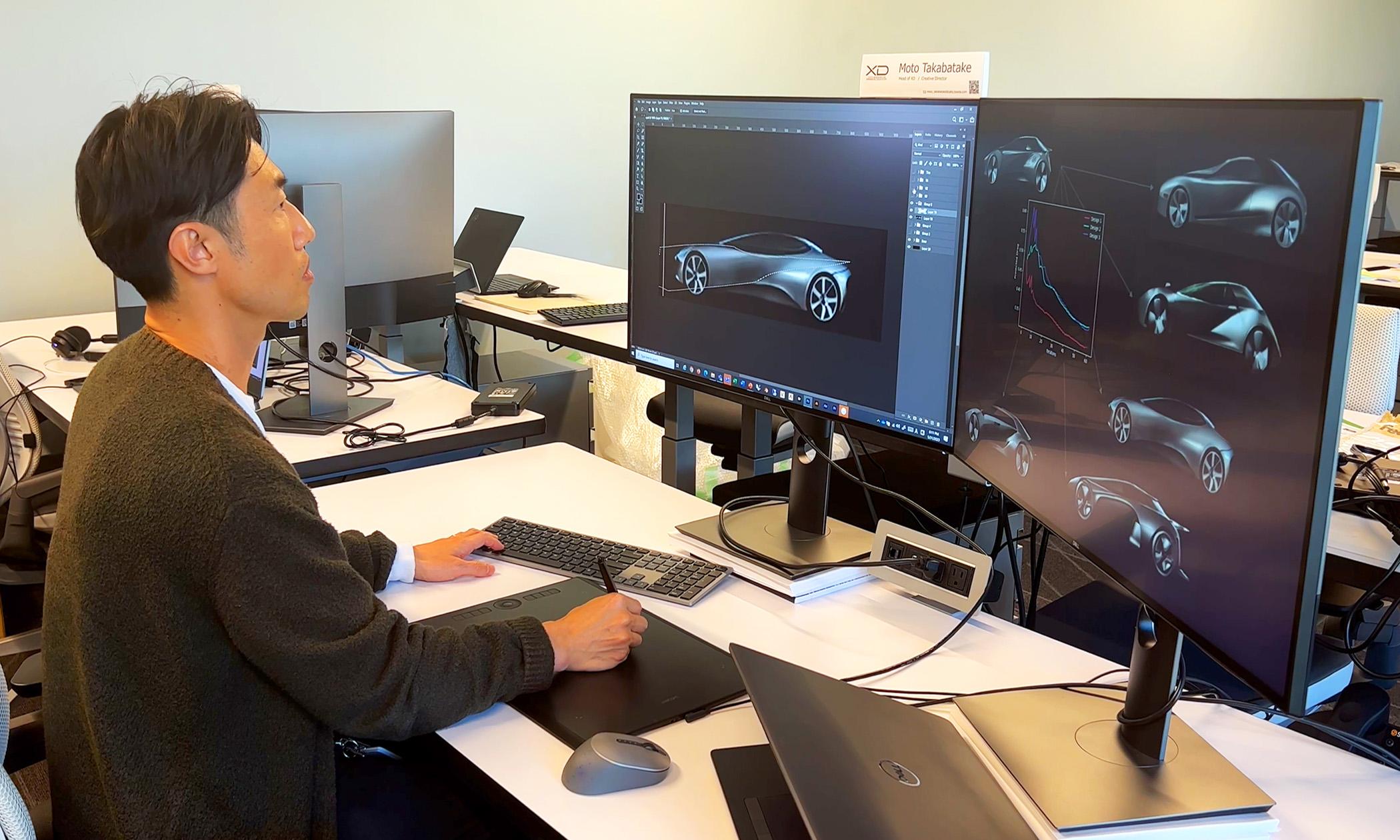
New Technique Gives Designers Added Capabilities by Incorporating Engineering Constraints Into Generative AI Models
LOS ALTOS, Calif. (June 20, 2023)–Toyota Research Institute (TRI) today unveiled a generative artificial intelligence (AI) technique to amplify vehicle designers. Currently, designers can leverage publicly available text-to-image generative AI tools as an early step in their creative process. With TRI’s new technique, designers can add initial design sketches and engineering constraints into this process, cutting down the iterations needed to reconcile design and engineering considerations.
“Generative AI tools are often used as inspiration for designers, but cannot handle the complex engineering and safety considerations that go into actual car design,” said Avinash Balachandran, Director of TRI’s Human Interactive Driving (HID) Division, whose team worked on the technology. “This technique combines Toyota’s traditional engineering strengths with the state-of-the-art capabilities of modern generative AI.”
TRI researchers released two papers describing how the technique incorporates precise engineering constraints into the design process. Constraints like drag (which affects fuel efficiency) and chassis dimensions like ride height and cabin dimensions (which affect handling, ergonomics, and safety) can now be implicitly incorporated into the generative AI process. The team tied principles from optimization theory, used extensively for computer-aided engineering, to text-to-image-based generative AI. The resulting algorithm allows the designer to optimize engineering constraints while maintaining their text-based stylistic prompts to the generative AI process.

As an example, a designer can request, via text prompt, a suite of designs based on an initial prototype sketch with specific stylistic properties like “sleek,” “SUV-like,” and “modern” while also optimizing a quantitative performance metric. In the research paper, the team focused specifically on aerodynamic drag. The approach can also optimize any other performance metrics or constraints inferred from a design image.
“TRI is harnessing the creative power of AI to amplify automobile designers and engineers,” said Charlene Wu, Senior Director of TRI’s Human-Centered AI (HCAI) Division, whose team collaborated with the Human Interactive Driving team on this project.

By incorporating engineering constraints directly into the design process, this tool could also help Toyota design electrified vehicles more quickly and efficiently.
"Reducing drag is critical for improving the aerodynamics of BEVs to maximize their range,” said Takero Kato, BEV Factory President, Toyota Motor Corporation.
For more technical details on this new technique, refer to the following two papers, available at:
Interpreting and Improving Diffusion Models Using the Euclidean Distance Function, F. Permenter, C. Yuan, 2023.
Drag-guided diffusion models for vehicle image generation, N. Arechiga, F. Permenter, B. Song, C. Yuan, 2023.
About Toyota Research Institute
Toyota Research Institute (TRI) conducts research to amplify human ability, focusing on making our lives safer and more sustainable. Led by Dr. Gill Pratt, TRI’s team of researchers develop technologies to advance energy and materials, human-centered artificial intelligence, human interactive driving, machine learning, and robotics. Established in 2015, TRI has offices in Los Altos, California, and Cambridge, Massachusetts. For more information about TRI, please visit http://tri.global.
TRI Media Contact:
Wendy Rosen
Senior Director of Communications
wendy.rosen@tri.global